Why shiso is a must-have herb for your edible garden
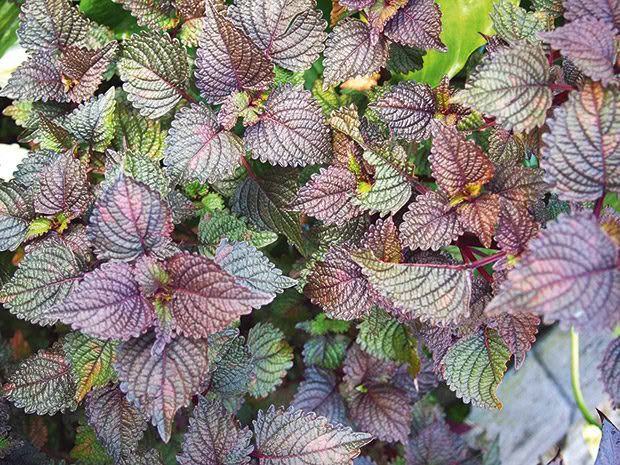
This gorgeous herb can revolutionise the flavour of the simplest salad, and is a staple ingredient if you love Japanese and Korean dishes.
Words & images: Jenny Garing
What: Shiso
Also known as: kkaennip, gaennip, ohba perilla leaf, Perilla frutescens
Varieties: red, green, bicolour
Benefits: rich in calcium, iron, fibre
Uses: edible, also used in Chinese medicine to treat asthma, colds, flu
I first tried shiso in Japan in the 1980s as an ingredient in hand-rolled sushi. Some of their most traditional dishes are based on its unique flavour.
Then in Korea, I came across it again, where it’s known as kkaennip (pronounced kay-neep) or gaennip, and wrapped around barbecued pork or beef fresh off the grill.
It’s used in lots of dishes in both countries. Interestingly, in Korea, its name translates to ‘sesame leaf’, but it’s nothing to do with the sesame plant (and doesn’t taste like it either).
It’s most commonly known around the world by its Japanese name, shiso, but they also sometimes call it ohba, meaning ‘large leaves’.
The big, broad, jagged-edged, soft leaves are either red/purple or green or a mix of the two. The red shiso is often described as having an anise flavour, whereas the green variety is spicier and more like cinnamon. The beautiful one I have taking over my gardens and paths is green on one side, purple on the other.
HOW TO GROW IT
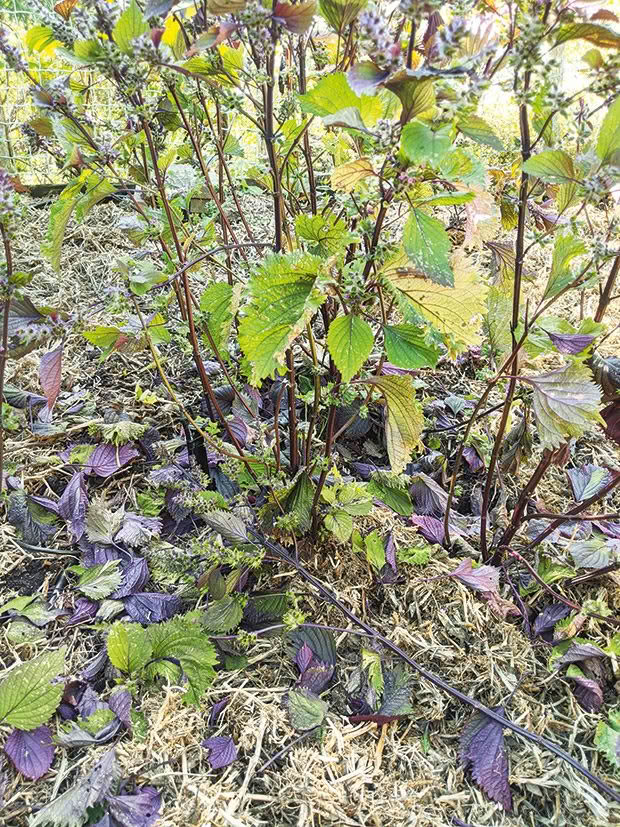
Shiso is an easy-to-grow herb from the mint family. It’s usually planted in spring and harvested in the summer and autumn. In Japan and Korea, it’s grown in sunny open fields, roadsides, waste places, and open woodlands, but it does well in pots too.
It’s a very attractive garden plant that attracts butterflies and other pollinators.
It can become a bit of a weed if you let it go wild. The seed heads dry up in autumn and fall off. In spring, you’ll find you have masses of baby shiso popping up everywhere as the seeds blow around the garden. However, it has a shallow root system, so it’s easy to weed out if there’s too much.
If you live in a windy area, protect the plants from wind or tie them to wooden supports, as they‘re easily blown over.
They don‘t need much care, except for consistent watering. However, if they‘re exposed to a lot of sunlight, the leaves and plants will be smaller – you can still eat them, but you might not get ones large enough for wrapping. If you want bigger leaves, keep plants in a semi-shaded spot.
HOW TO USE FRESH LEAVES
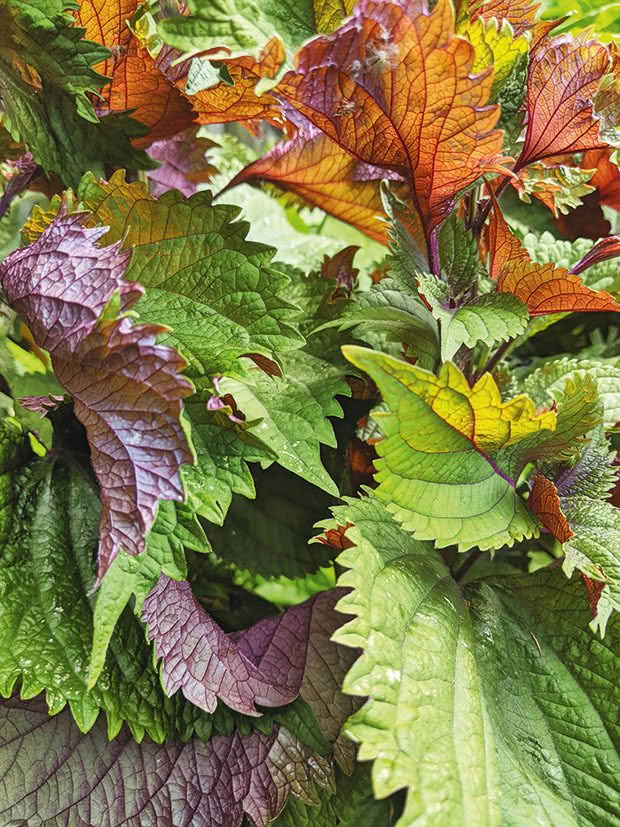
Shiso has a unique flavour. It’s pungent and grassy, with notes of spearmint, basil, anise, and cinnamon. Slicing it into long skinny strips brings out these flavours.
It’s an essential herb in Japanese cooking, used mainly in savoury dishes. Red shiso leaves are used to make umeboshi, the Japanese red pickled plum, colouring the fruit and giving them a distinct flavour. The pickled ginger you’re often served on the side of sushi is also preserved using shiso, giving it its distinctive pink hue.
The seeds form an essential part of the famous seven spices of Japan (shichimi), which originated more than 300 years ago in Kyoto.
Green shiso leavs are often wrapped around sushi or served with sashimi as a garnish. They’re also added to soups, tempura, or dried and sprinkled over rice. Japanese chefs add shiso to tofu (bean curd) dishes or use it wrapped around pieces of meat – wrap pork or lamb koftes in a whole shiso leaf before pan-frying.
You get a great finger food with a crisp outer layer. You can mix shredded shiso, leftover cooked rice, and an egg and fry it in oil to make a crispy fritter. Serve topped with a fried or poached egg, sliced spring onion, black toasted sesame seeds, and fresh shiso leaves cut into slivers.
Shiso goes exceptionally well with noodles, pasta, avocado, cucumber, mushrooms, tomato, ginger and soy sauce, sesame, fish and shellfish, pork, stone fruit, citrus, and berries.
HOW TO USE THE REST OF THE PLANT
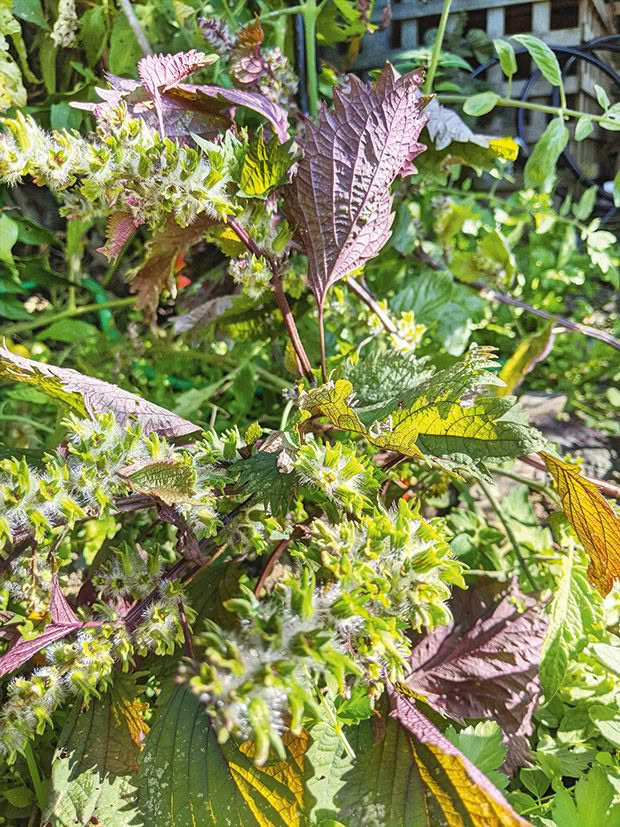
Chopped shiso buds are delicious. You can make sesame salt by drying the buds and grinding them with salt and toasted sesame seeds.
Shiso seeds are packed with aromatic flavour, and they’re especially good toasted and crushed on top of fish.
15 WAYS TO EAT FRESH SHISO
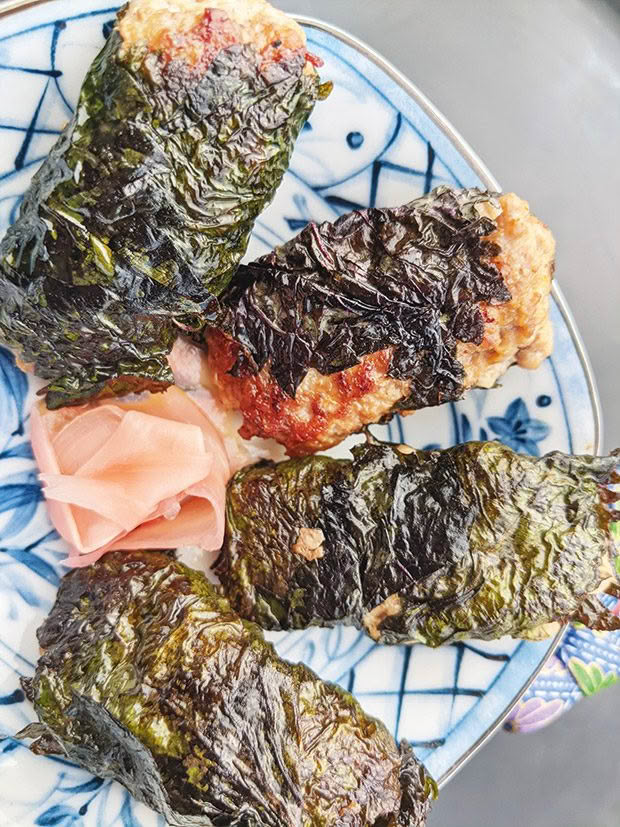
1. Julienned and sprinkled on a simple citrus or mixed green salad.
2. Tossed into a pot of your favourite green tea.
3. Minced into or as a leaf wrap for tuna salad.
4. Chopped up with fresh fruit (especially stone fruit).
5. Chopped up and added to roasted or stir-fried veggies.
6. As a leaf wrap for barbecued meat or tofu.
7. In scrambled eggs.
8. Fry the leaves in a tempura batter.
9. Make shiso oil to drizzle over gazpacho or other soups.
10. Pickle it with cucumbers.
11. Sprinkle it over a carrot and ginger soup.
12. Add it to a cucumber salad with rice vinegar.
13. Add it to pasta with olive oil, nori, soy sauce, butter, salt, and pepper.
14. Make shiso pesto for pasta.
15. Try infusing red shiso for cocktails – put about 10 shredded leaves into a cup of vodka. Leave for two days, then strain. It produces a beautiful pink-coloured vodka, used to make shiso martinis or mojitos.
MORE HERE
Love this story? Subscribe now!
 This article first appeared in NZ Lifestyle Block Magazine.
This article first appeared in NZ Lifestyle Block Magazine.
